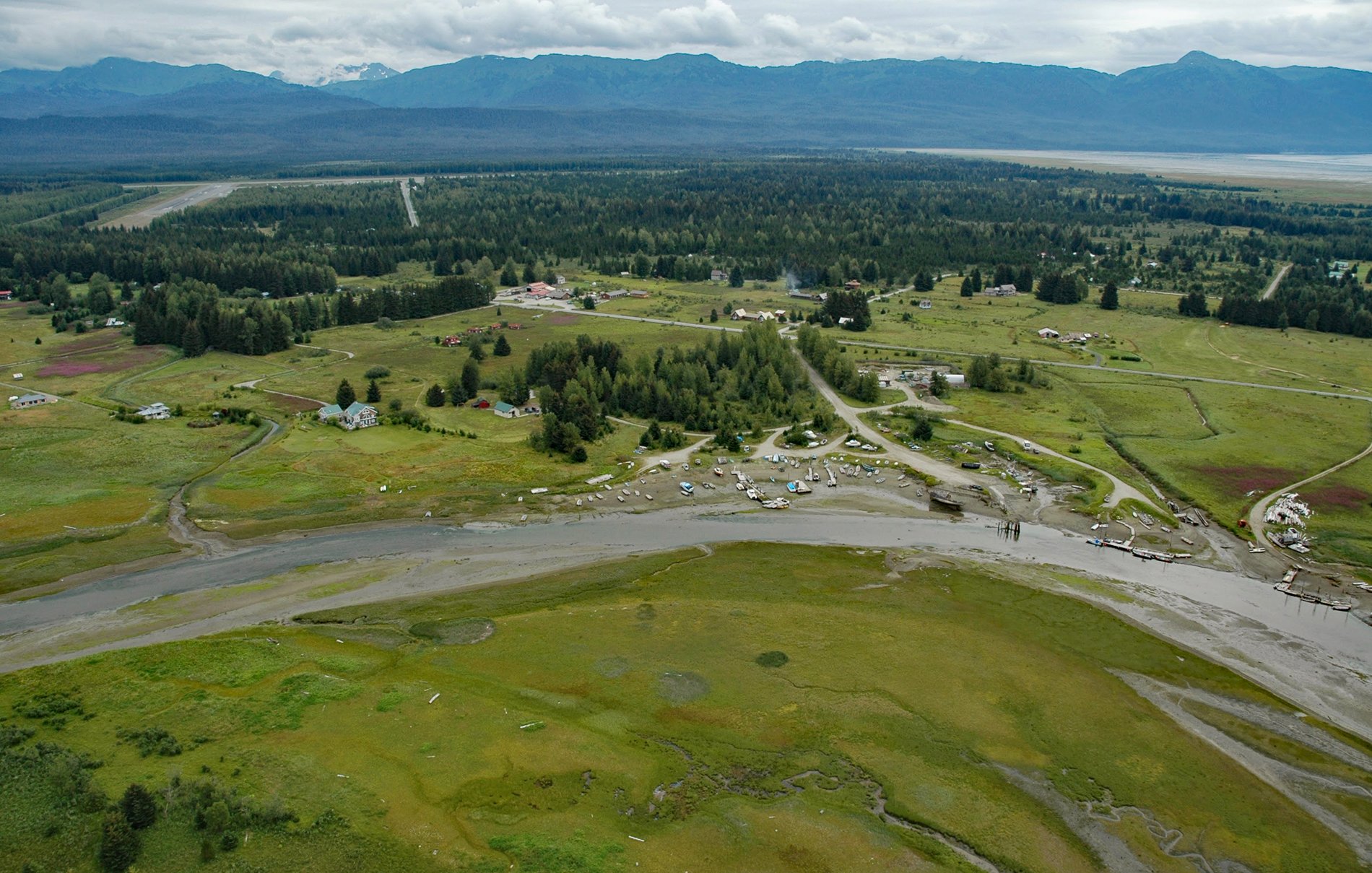Gustavus is a community on the north shore of Icy Strait, at the mouth of the Salmon River and across from Pleasant Island, about 48 miles (77 km) west-northwest of Juneau, and 28 miles (45 km) northeast of Elfin Cove, Alaska. Gustavus is situated on a large plain created by receding glaciers and is completely surrounded by Glacier Bay National Park.
In 1793, Captain George Vancouver named the northern tip of Chichagof Island, on the south shore of Icy Strait, Point Adolphus after Adolphus Frederick, the seventh son of King George III. In 1878, William Healey Dall, who was charting the coast for the U.S. Coast and Geodetic Survey, incorrectly assumed the name was for Swedish King Gustavus Adolphus. The point across Icy Strait from Point Adolphus at the mouth of Glacier Bay was not yet named, so Dall called the point of land “Point Gustavus”.
Point Gustavus is an outwash plain created by the glaciers that once filled Glacier Bay. As the glaciers that covered the area 200 years ago receded, isostatic rebound caused the land to quickly rise at over an inch (2.54 cm) per year. Land that once was within the tidal zone is now covered by spruce trees. The native Tlingit people and others have historically used the area for fishing and berry picking. The first settlers arrived in 1914 and called the area Strawberry Point, and the first permanent homestead was established in 1923. In 1925, the U.S. Postal Service renamed the town Gustavus. Today, Gustavus spreads across the continually rising flatlands. Read more here and here. Explore more of Gustavus here:

